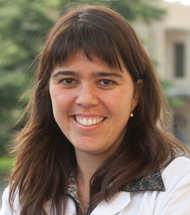Maira Bes Rastrollo, Professor of Preventive Medicine and Public Health , University of Navarra, Spain
Osteoporosis: silent epidemic or natural aging?
Imagine that one out of every three women you pass on the street over the age of 50 is ill. Would it be possible? According to the definition of osteoporosis and the estimates made in our environment, the answer to that question is yes. Can you imagine for a moment the social (and perhaps economic) impact of having a third of the entire female population over the age of 50 "labeled" as sick?

Osteoporosis is a systemic skeletal disease characterized by a loss of bone mass, alteration of bone microarchitecture and consequently an increased risk of fractures. It is therefore the most common metabolic bone disease.
Peak bone mass is obtained at around 35 years of age and from then on there is bone loss (we lose 0.5% of bone mass per year), which accelerates after menopause and can reach 2% per year. Although 60-70% of the variability of this peak is determined by Genetics, the remaining 30-40% is related to modifiable factors such as per diem expenses or physical exercise. Sufficient calcium intake during the first three decades of life contributes to reaching the desirable peak of maximum bone mass and an important calcium source at per diem expenses is dairy products. In addition, green leafy vegetables such as spinach, beans, chard, broccoli, along with salmon and sardines are good alternative sources of calcium.
Likewise, estrogen deficiency linked to postmenopause is associated with an increased loss of bone mass. And despite the benefit at the bone level, the routine use of estrogen and progesterone hormone therapy in menopause is not currently recommended due to the increased risk of developing breast cancer, ischemic stroke or thromboembolism.
Because of its involvement in calcium metabolism, a deficient intake of vitamin D has also been associated with an increased risk of osteoporosis, so it is highly recommended to go outdoors and sunbathe in moderation. A 10-15 minute sunbathing session per day on the face and upper extremities would be sufficient to avoid hypovitaminosis D. Avoiding exposure to tobacco also prevents osteoporosis. As if we still needed more reasons, we therefore have another good reason to banish tobacco consumption from our society. Tobacco has a toxic effect on bone cells (osteoclasts) and bone remodeling. Other risk factors to take into account are excessive alcohol consumption, high salt intake and the use of certain drugs.
However, it should be noted that most fractures are due to traumatic causes (accidents) and do not exclusively have an osteoporotic component. Therefore, protection against fractures by correcting visual and hearing defects, as well as gait protection (canes, walkers) and the removal of barriers at home and in the community, will be as or more effective measures to prevent fractures than the use of drugs that are not free of side effects.

From the point of view of Public Health it is important to remember the importance of carrying out primary prevention based mainly on healthy lifestyles with the goal to improve the health of the population, especially women's health. It should not be forgotten that there are companies that can reduce everything to a mere "technical" or "pharmacological" approach and that is why they insist that osteoporosis is the silent epidemic of our times. As John Abramson reminds us in Overdo$ed America, good marketing of a disease is the best way to bring a drug to market. It is a disease without associated clinical manifestations, defined by a specific cut-off point in bone density in 1993 by a group of experts who were later found to be financed by some pharmaceutical industries. Currently, there are many scientists who consider that the overdiagnosis of bone fragility leads to excessive pharmacotherapeutic treatment, overshadowing other forms of prevention based on avoiding falls and modifying lifestyles and physical activity, which help to reach adulthood with the best bone quality and to be able to age and accept this natural process in the best possible way.
